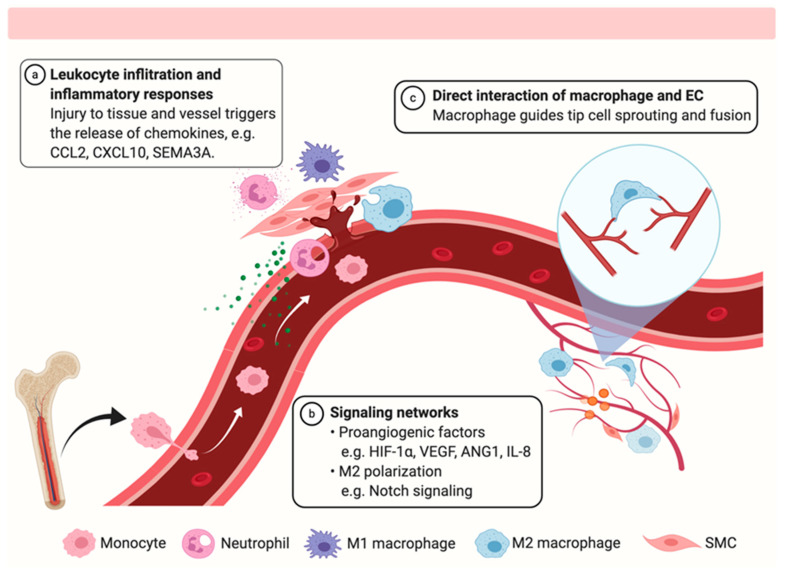Figure 1.
The role of macrophage during the vascular repair. Bone marrow-derived monocytes are recruited to the site of tissue injury in response to the chemokine gradient. Following the initial inflammatory responses, tissue-resident macrophages (TrM) and monocyte-derived macrophages (MoM) polarize to M2 phenotype for phagocytosis of necrotic cells and injured stimuli. During the proliferative phase, proangiogenic factors are induced to improve angiogenesis. Macrophages can bridge tip cells directly to guide the vessel sprouting and branching for neovascularization. The diagram is created with BioRender.com.

